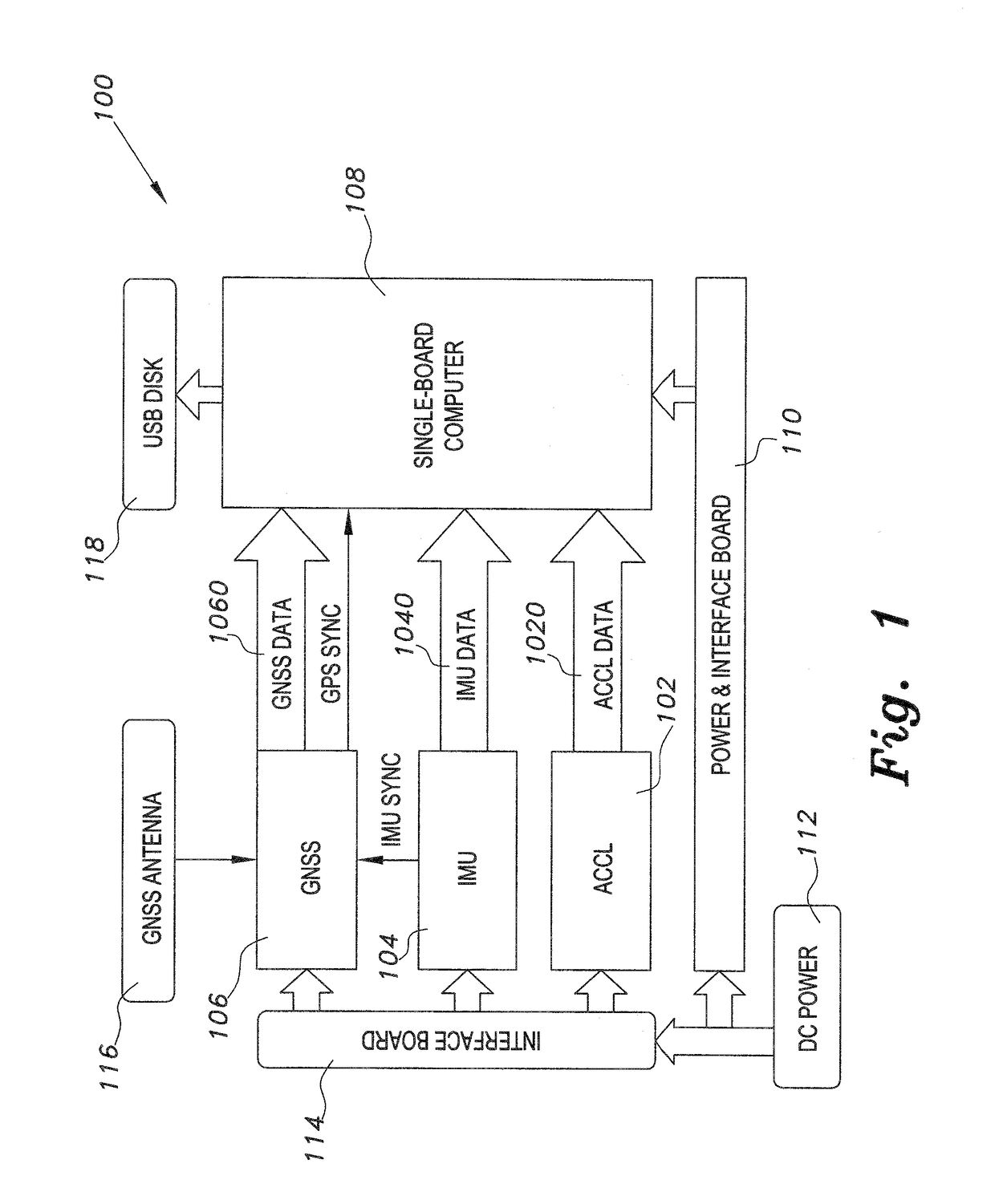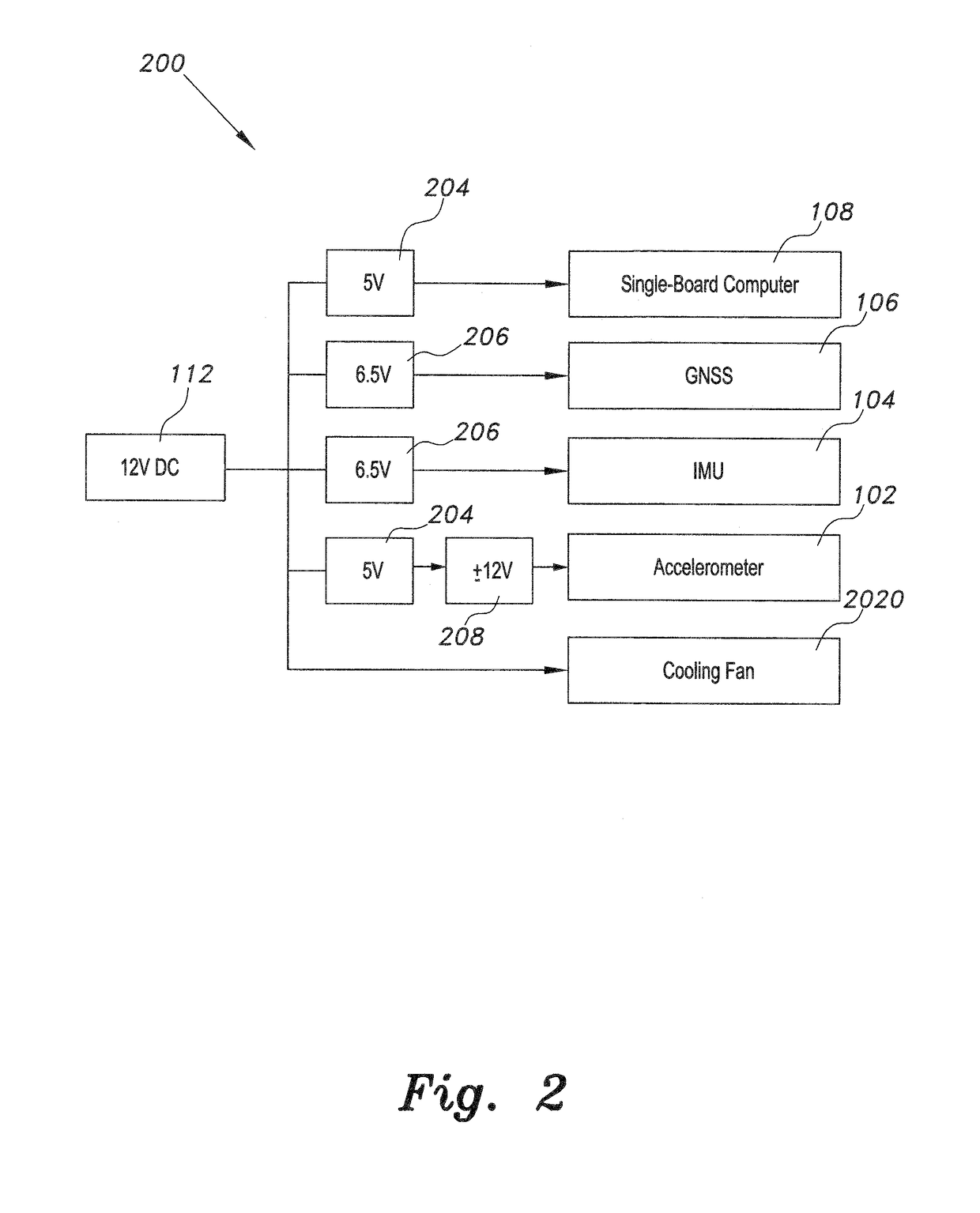Inertial system for gravity difference measurement
a gravity difference and gravity technology, applied in the field of airborne gravimetry, can solve the problems of inability to easily upgrade, bulky, expensive, etc., and achieve the effects of low measurement noise density, high relative precision, and simplified algorithm
- Summary
- Abstract
- Description
- Claims
- Application Information
AI Technical Summary
Benefits of technology
Problems solved by technology
Method used
Image
Examples
Embodiment Construction
[0019]As shown in FIG. 1, the inertial system for gravity difference measurement (GravMap) 100 includes a GNSS receiver board 106 connected to a single-board computer 108. Inertial Measurement Unit (IMU) 104, and accelerometer 102 are also connected to the single-board computer 108. GNSS data 1060, IMU data 1040, and accelerometer data 1020 are exchanged between the GNSS 106, IMU 104 and accelerometer 102, respectively, and the single-board computer 108. The GNSS 106 also has a synchronization line connected to the computer 108. A GNSS antenna 116 is connected to the GNSS for reception of satellite global positioning data. Data processed by the computer 108 is stored on a USB disk or drive 118, which is connected to the computer 108.
[0020]A DC power source 112 is connected to a communal power and interface board 110, which connects to and powers the single board computer 108. The DC power source 112 is also connected to a second interface board 114, which is connected to and powers ...
PUM
 Login to View More
Login to View More Abstract
Description
Claims
Application Information
 Login to View More
Login to View More - R&D
- Intellectual Property
- Life Sciences
- Materials
- Tech Scout
- Unparalleled Data Quality
- Higher Quality Content
- 60% Fewer Hallucinations
Browse by: Latest US Patents, China's latest patents, Technical Efficacy Thesaurus, Application Domain, Technology Topic, Popular Technical Reports.
© 2025 PatSnap. All rights reserved.Legal|Privacy policy|Modern Slavery Act Transparency Statement|Sitemap|About US| Contact US: help@patsnap.com



